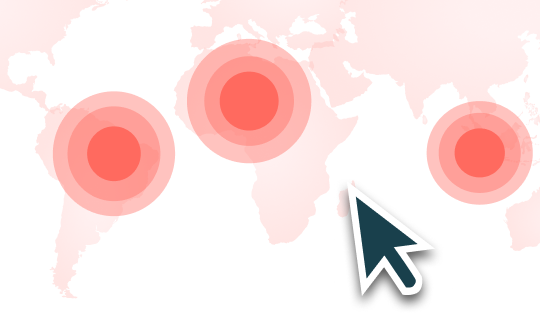Deforestation surge ends a decade of progress for Indonesia’s pulp sector
Deforestation and greenhouse gas emissions rise as Indonesian pulp producers expand operations to meet growing demand from China.

Hilmawan Nurhatmadi/Shutterstock
Deforestation in Indonesia’s pulp sector is rising again after a multi-year lull. In the 1990s and 2000s, Indonesia’s pulp and paper industry was strongly criticised for clearing millions of hectares of biodiverse and carbon-rich tropical rainforest. Corporate commitments to stop deforestation by the sector’s two dominant producers in 2013 and 2015 were followed by dramatic declines in deforestation. However, Trase’s most recent analyses show a near fivefold increase in deforestation between 2017 and 2022, which could signal more trouble to come for rainforests in Indonesia. Indonesia’s pulp sector also faces huge challenges in addressing its greenhouse gas emissions, which are equivalent to Cambodia’s total annual GHG emissions.
‘Mega’ mill development drives growth in pulp production
The Indonesian pulp and paper industry ranks eighth in the world, employing over 160,000 people and earning export revenues of US$7.5 billion in 2021. The pulp sector is controlled by three corporate groups: Sinar Mas and its subsidiary Asia Pulp & Paper (APP), Royal Golden Eagle and its subsidiary Asia Pacific Resources International Ltd (APRIL), and Marubeni. Of these groups, APP and APRIL are dominant, accounting for a combined 95% of pulp exports and 96% of overall pulp production.
Just over half of the 9.9 million tonnes of pulp produced in Indonesia in 2022 was exported. The remainder is processed in Indonesia to produce paper, tissue, viscose and other products for both domestic and export markets. Of the pulp that is directly exported, almost three quarters flows to China. Other major pulp export destinations include India, South Korea, Bangladesh, Vietnam and Turkey. A large portion of the exports to China go to integrated operations of the two dominant groups. For example, Royal Golden Eagle, the world’s largest viscose producer, has a number of viscose mills in China under its subsidiary Sateri, while Sinar Mas has paper and tissue operations in China that rely upon Indonesian pulp.
Overall pulp production has expanded by 46% in the last eight years, largely because Sinar Mas started operating one of the world’s largest pulp mills in South Sumatra in late 2016. The sector is poised for even more growth as both Sinar Mas and Royal Golden Eagle are planning large increases in pulp capacity for mills in Sumatra, and due to the development of a new large-scale pulp mill in northeast Kalimantan linked to Royal Golden Eagle (Royal Golden Eagle denies any affiliation).
Wood consumption has expanded almost in line with the increase in pulp production, reaching more than 46 million cubic metres in 2022. The wood is predominantly sourced from a network of wood suppliers that cultivate fast-growing eucalyptus and acacia plantations on 2.63 million hectares in Sumatra and Kalimantan. This plantation base has expanded over the last eight years by almost 30% from 2.05 million hectares in 2015, according to Trase’s analysis.
Hotspots of deforestation identified
The latest data from Trase shows a significant uptick in deforestation driven by the development of pulpwood plantations in 2022. The hotspot for deforestation is on the island of Kalimantan where virtually all (98%) of the most recent deforestation has occurred.
Trase’s spatial analysis indicates that most new deforestation is happening in licensed industrial wood fibre concession areas that are not yet supplying wood to pulp mills, while the pulp companies’ zero-deforestation monitoring programs cover only active suppliers. The pattern of deforestation also points to where conservation efforts can have the biggest impact: industrial wood fibre concession-holders that are not yet supplying pulp mills control much more remaining natural forests than do the existing wood suppliers.
Satellite imagery highlights the fast pace of conversion from natural forest to pulpwood plantations. For example, between 2015 and 2022, the PT Mayawana Persada concession in the province of West Kalimantan lost almost 21,000 hectares of natural forest to the expansion of pulpwood plantations. More than half of this loss occurred in 2022, mostly in peat-swamp forest, according to Nusantara Altas.
Indonesian pulp’s carbon conundrum
Pulp produced in Indonesia has globally significant greenhouse gas (GHG) emissions due to a combination of fire, peat subsidence and land-cover change. Trase found that the industrial concessions growing wood for pulp in Indonesia emitted an annual average of 103.4 million tonnes of carbon dioxide equivalent between 2015 and 2022.
The Indonesian pulp sector has such high GHG emissions largely because some 40% of the sector’s plantations (1 million ha) are on carbon-rich peatlands. Peatlands are water-logged areas where decaying forest matter accumulates, providing the largest terrestrial store of carbon on the planet. To establish industrial-scale tree plantations, water is drained and the natural forests growing on peatlands are cut down. After they dry out, peatlands start releasing GHG emissions in a process called subsidence that continues until the peat soil is depleted or rewetted. Even employing best practices for water management on drained peatlands, which both major Indonesian pulp producers say their suppliers do, has limited impact on lowering the overall emissions.
Draining peat also makes the land vulnerable to fires. When dry El-Niño years occur – as they did in 2015 and 2019 – fires can sweep the landscape and fill the air with noxious haze for weeks or months at a time. Besides damaging health and the economy, these fires release massive amounts of carbon that cause spikes in the pulp sector’s greenhouse gas emissions. With GHG concentrations in the atmosphere driving more frequent and intense El-Niño cycles, fires on drained peatlands are both a cause and consequence of climate change.
Global markets exposed to deforestation and carbon risks
More than 90% of Indonesia’s pulp is processed in Indonesia or China to produce paper, packaging, tissue products and synthetic textiles consumed in countries around the world. As a result, the Indonesian pulp sector’s deforestation and GHG emissions are embedded across the world in people’s closets, bathrooms and mailboxes. For example, a quarter of Indonesia’s exports are a type of pulp used to produce fabric called viscose by Royal Golden Eagle-affiliated companies such as Asia Pacific Rayon in Indonesia and Sateri in China. With a quarter of global viscose production capacity, the fabric produced by RGE's Sateri and Asia Pacific Rayon is used in clothes and other textiles sold around the world even as brands such as H&M and Marks & Spencer have shifted suppliers over sustainability concerns.
The pulp sector’s greenhouse gas emissions are linked to domestic and global financial institutions that provide capital and loans to the corporate groups operating in the sector. Financial regulatory authorities are increasingly requiring banks and investment managers to disclose emissions associated with loans and investment portfolios, including for banks in Indonesia that provide much of the sector’s financing. China, where Indonesia sends over a third of its total production and sources multi-billion dollar loans, has sent top-down guidance to improve the mechanisms for carbon emission reporting and information disclosure system for enterprises and financial institutions.
Greater global awareness of the sector’s high GHG emissions could encourage emissions reductions if enough buyers and financiers demand action. This could encourage companies to phase out plantations operating on drained peatlands and restore degraded landscapes, which would stem emissions and reduce fire risk. Moreover, the sector’s plans to expand pulp production could be put on hold until the plantation base is shifted to a lower emissions profile. But retiring plantations on peatlands en masse and postponing mill expansions are difficult decisions that would dampen economic returns in the short term.
Indonesia’s pulp sector also faces new import restrictions in consumer markets on products linked to deforestation. At the end of June, the European Union’s new deforestation regulation, which bans products linked to recent deforestation came into effect and covers pulp and paper. In September, China and the Association of Southeast Asian Nations launched the China-ASEAN Green Value Chain Partnership, making efforts to advance sustainable development of the agricultural commodities trade. Consumer brands are reluctant to risk their reputations by maintaining ties with companies that fail to eliminate deforestation from their supply chains. Indonesian pulp producers now have the choice of doubling down on their commitments to zero-deforestation or risk being seen, once again, as drivers of forest destruction in a global marketplace that increasingly no longer accepts such behaviour.
How to cite this article: Conservation Economics Lab, Woods & Wayside International, TheTreeMap, Stockholm Environment Institute, & Global Canopy. (2023). Deforestation surge ends a decade of progress for Indonesia’s pulp sector. Trase. https://doi.org/10.48650/KWRA-E756
Explore the Indonesia wood pulp data on Trase Supply Chains
Read the methodology for mapping the Indonesia wood pulp supply chain
Was this article useful?




